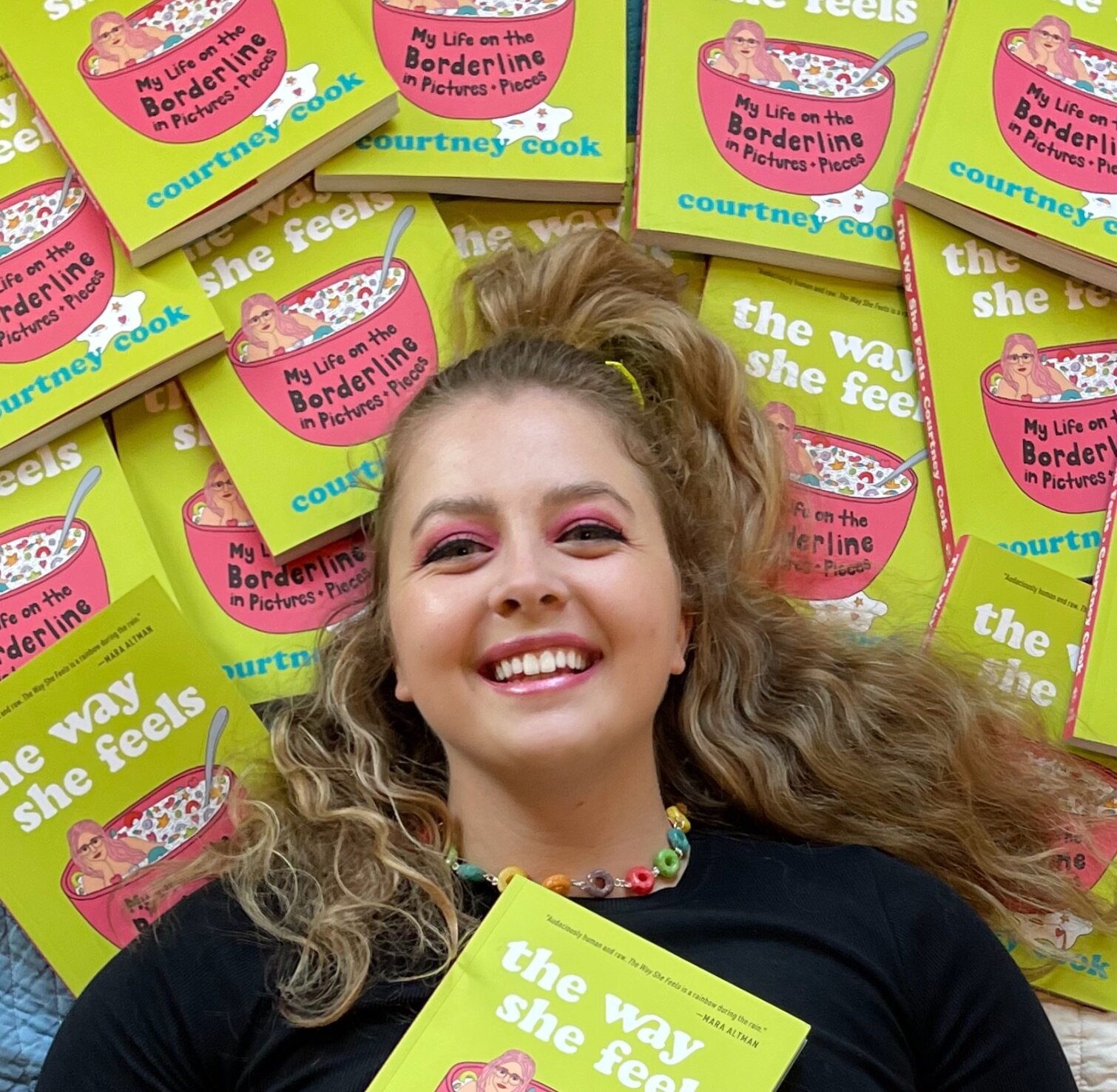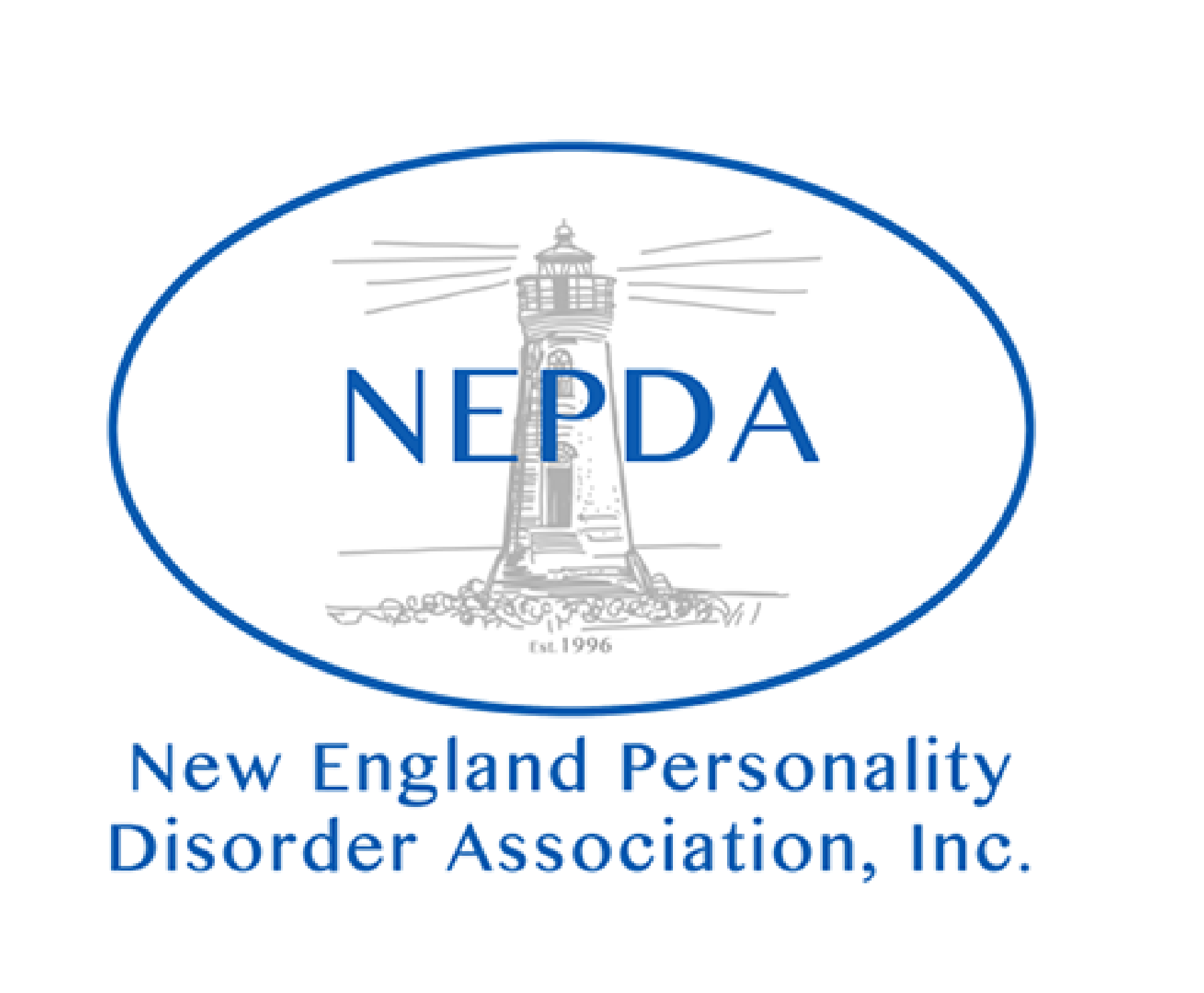Courtney Cook, author of The Way She Feels: My Life on the Borderline in Pictures and Pieces (Tin House, 2021).
Disclaimer: This interview contains a first-person account of experience with mental illness and other topics relating to mental health that may be sensitive to some audiences. It is presented for informational purposes only. Please take care when reading, and engage with this interview only if you feel you’re in a place that will allow you to do so safely. If you feel you’re in need of support at any time, please call the National Suicide Prevention Lifeline at 1-800-273-8255 or consult SIoutreach.org. In the event of a medical emergency, please seek emergency care immediately through a doctor, hospital, or by calling 911 in the United States. The views expressed herein belong to the interviewee and do not necessarily represent the views or opinions of Emotions Matter, Inc.
Bea Tusiani of Emotions Matter interviewed Courtney Cook, author of the recently published book, The Way She Feels: My Life on the Borderline in Pictures and Pieces (Tin House, 2021) to learn more about her memoir and recovery journey.
Q: You describe BPD as a ghost that follows you around, haunting you. How have you managed to live with this and confront it?
Though I was first speculated to have BPD when I was thirteen, I didn’t receive a formal diagnosis until I was twenty-three. I felt that BPD was more of a ghost during the ten years where I wasn’t yet diagnosed, as I didn’t understand why I reacted so strongly to situations that others weren’t fazed by, why it took so long for my emotions to reach baseline even after the trigger was resolved, why I couldn’t seem to maintain friendships or relationships and constantly feared I was going to be abandoned, why I felt empty all the time. Just as ghosts are (theoretically) invisible but leave evidence of their presence—a curtain swaying without a breeze to cause that movement, a floorboard creaking as if someone were walking on it without anyone doing so—my BPD was invisible, but I could see the destruction and disruption it was causing in my life. I just couldn’t identify the root of that destruction or figure out how to stop it, because you can’t change something you don’t know exists in the first place.
I know that some people feel that receiving a formal diagnosis is limiting or harmful, but I personally found it freeing. Receiving my BPD diagnosis showed me that I wasn’t alone in the world, and gave me hope that I could get better, and that I wasn’t doomed. It allowed me to recognize the detrimental patterns I’d been unaware I’d been engaging in, which gave me the ability to work to stop myself from engaging in those patterns in the future. Rather than addressing the peripheral symptoms I was experiencing as a result of my BPD, I was finally able to address the root of those symptoms, and this allowed me to grow and heal in a way I was never able to previously.
Even though I am in a much better place than I was ten, five, even just one year ago, my BPD still sneaks up on me and certain symptoms or thoughts will rear their heads when I least expect it. I still consider my BPD a ghost that haunts me in some ways, but because I have been able to work through my patterns in therapy and learn coping skills to help mitigate my symptoms, but I’d say BPD is now more of a Scooby-Doo-style ghost—like my BPD is poorly disguised in a bed sheet with cut out eye holes.
Q: You have an essay in your book titled, “I Googled “Borderline Personality Disorder” and Wanted to Run for the Hills.” Can you elaborate on why that was?
When I was first diagnosed with BPD, I noticed a humongous gap between my experiences as someone with BPD and the way BPD is portrayed in books, films, and the media as a whole. Simply Googling “borderline personality disorder” and being met with suggested searches such as “Can people with BPD really love?” “Are borderlines abusive?” and “Are people with BPD dangerous?” was startling. It put into perspective not only how misunderstood BPD is as a whole, but the ways people might view me or the assumptions they might make about me once they discover my diagnosis. This is what ignited my desire to “run for the hills.”
I was especially hurt when I clicked the suggested search “What celebrity has BPD?” expecting it to come up with Pete Davidson, and it taking me to an article about Jeffrey Dahmer, the infamous murderer and cannibal. As I desperately searched for more representation, I was mostly met with articles about celebrities who are (or were) merely speculated to have BPD, such as Amy Winehouse, Kurt Cobain, and Princess Diana, and I became overwhelmingly discouraged knowing that Amy and Kurt both died at age 27, and Princess Diana at 36. It made me question where I had any hope of living into my thirties or beyond. I looked for more hopeful depictions in books and films, but the media representations of BPD weren’t any better—aside from shows like Crazy Ex-Girlfriend and books like Girl, Interrupted, I was met with media that portrayed a demonized version of BPD that I didn’t recognize and couldn’t relate to.
Though one could argue that fictional media isn’t necessarily meant to be a truthful or accurate representation of reality, the harm caused by these stigmatized, problematic depictions floods from the fictional realm into the real world. I’ve heard people throw around “borderline” as an insult. I’ve seen the fear the mere mention of BPD can bring forth in someone whose only concept of BPD comes from the media. After receiving my BPD diagnosis, I was even turned down by eight therapists prior to finding one who would work with me, and all eight of those therapists cited BPD as their reasoning for not taking me on as a client. They heard that I had BPD and they decided they knew all about me they needed to know, as if my diagnosis could somehow speak to my entire demeanor and character.
Though I found that Google search disturbing for a million reasons, and absolutely felt hurt by learning how the world perceives BPD, it’s ultimately what spurred my desire to publish a book on my experiences with BPD. I wanted to write the book that I wished I’d had when I was diagnosed; one that let readers take a look into what it’s like to be someone who lives with BPD without all the fear-mongering, misportrayals, and stigma. While I am obviously only able to speak to my individual experience and am in no way claiming or trying to represent the BPD community as a whole, it’s my hope that allowing readers a glimpse into what it’s like to live with BPD through my memoir will help to break down some of the stigma that surrounds BPD, and help to humanize BPD for those who might be wary or fearful of it, as I strongly believe that their fear is directly correlated to a lack of understanding and information.
Q: When you were in middle school you were sent to La Europa Academy, a residential treatment center in Utah, where you stayed for 10 months. What was that experience like?
If you’d asked me what I thought about La Europa Academy when I was actually a student there, there’s a good chance I would’ve told you I hated it. And I did hate aspects of it—I hated being away from my family, dog, and friends back home in Chicago; I hated having no access to my cell phone or iPod and only being able to use the internet for homework purposes while supervised; I hated having to talk about all the feelings I’d been trying to bury in endless group and individual therapy sessions—but the ten months I spent at La Europa were among the best months of my life.
As much as I dreaded talking about all the feelings and experiences I’d been trying to avoid addressing, working through them in therapy helped them carry less weight and made being alive feel less and less heavy, until one day it didn’t feel like a curse anymore. Though I hated not having access to my phone/iPod/the internet, their absence allowed me to return to a simpler time where I didn’t have anything to focus on but what or who was in front of me, or anywhere to be but the present, and I found myself excited by the smallest things, like roasting pink Starburst over fires in our backyard, or visiting the animals at the farm down the road on fieldtrips. Before going to treatment I had a really strained relationship with my parents, and almost no relationship with my sister (who was only ten at the time), but missing them made me realize I wanted a relationship with them, and I became willing to put in the work to foster it. I wrote snail mail to my friends back home and realized who was willing to stick around when things got tough, and who wasn’t willing and therefor wasn’t worth my time, all the while living with 32 other girls, some of whom would become my best friends.
There are certainly aspects of my time in treatment that I don’t feel any fondness toward, rules I didn’t and don’t agree with, and experiences I would rather forget, but when I think back to my time at La Europa, I feel immeasurable gratitude. I am so, so lucky to have had the privilege to receive the care and support I so desperately needed, care that I know so many other deserving individuals do not have access to. I feel unbelievably thankful for those ten months, and absolutely credit La Europa for saving my life by giving me the opportunity to work my hardest to save myself.
I have an essay in TWSF titled Ten Months in Europe that explores my time at La Europa in more depth, which was recently excerpted and published by The Guardian, which you can read here.
Q: You dedicated THE WAY SHE FEELS to your thirteen-year-old self. What would you tell your thirteen-year-old self now, over ten years later, if given the opportunity?
“Hey, this will come as a huge surprise, but we’re alive. How cool is that?”
For more information: https://tinhouse.com/book/the-way-she-feels/




















